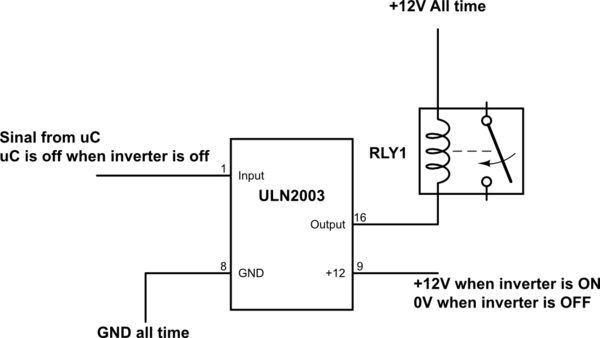I have searched for troubleshooting the ULN and did not find any solution.
I use a ULN chip in a motor inverter for controlling precharge relay and main relay. The problem is when the motor inverter is powered off, and for instance the charging is on (battery charging) the relay will kick in getting negative trough the unpowered ULN??? Sounds strange, but It's happening. And I don't want the motor inverter ON all time (uses power and draining the battery)
I can not disconnect GND from inveter. I can not disconnect POS from relays.
Is there a "easy" solution to this??
The relay is connected to +12V and one output pin on the ULN. The ralay gets some "creepage" current from the ULN, enough to energize the relay. Happens when inverter is off, but other devices are on (like charging)

simulate this circuit – Schematic created using CircuitLab




